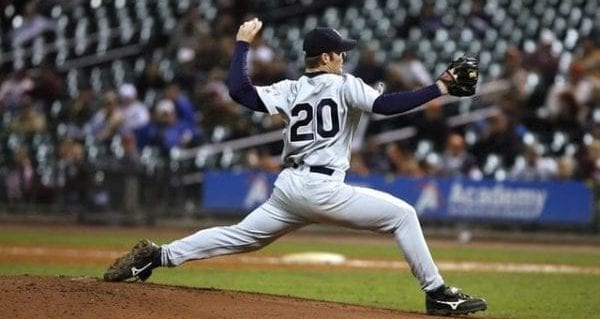 It’s a perennial baseball topic: Were the players from the past better or worse than today’s?
It’s a perennial baseball topic: Were the players from the past better or worse than today’s?
It’s a fun topic, often debated in offices, in sports bars and on radio talk shows – especially come World Series time.
There are points to be made on both sides of the question. We asked our followers for their thoughts on the topic and, as you might guess, we received passionate responses supporting both today’s players and those from years gone by.
Arguments for today’s players generally centered around the superior size, strength and speed of today’s players, primarily the result of state-of-the-art in-season and off-season strength, conditioning and nutrition programs. One respondent simply listed the size of current New York Yankee bombers Giancarlo Stanton (six-foot-six, 245 pounds) and Aaron Judge (six-foot-seven, 282 pounds), in relation to the legendary Yankee power hitters from the 1950s and ’60s, Mickey Mantle (five-feet-11, 195 pounds) and Roger Maris (six-feet, 197 pounds), as evidence of the superiority of today’s players.
Several fans pointed out that today’s players are competing against a stronger player pool – made up of athletes from a wide variety of cultures and countries (including, most notably, Latin American and Asian players) – as opposed to the lily-white player pool that existed the first half of the 1900s.
Another proponent of today’s players pointed to the fact that the vast majority of players in decades past (at least until the 1970s) had to have full-time off-season jobs to support their families. That’s clearly not the case today, allowing players to train year-round.
Not to be outdone, players from yesteryear also had plenty of support from baseball fans.
Most of the arguments supporting old-time greats were based on claims that players in the past had better fundamental skills. For example, bunting and hit-and-run skills were said to be better in the past. One respondent said players in the ’50s were much better at putting the ball in play with two strikes. Another said that while pitchers in the past didn’t throw as hard as today’s hurlers, they had better control and could more effectively hit their spots.
One writer claimed that America’s best athletes from the 1920s to the ’60s chose baseball over other sports. He cited that as support for the superiority of players in those decades. He said today’s best athletes gravitate more to football and basketball.
Then there’s the equipment. Proponents of players from yesteryear argue that they accomplished great things with far inferior equipment.
It’s all interesting stuff to think about.
However, I propose that the much more interesting question is: Which game is/was more enjoyable to watch, the game we’ve seen evolve the last five to 10 years or the game we saw for a good portion of the 1900s?
I believe today’s game has become increasingly boring and less enjoyable to watch.
The primary reason is lack of action.
This is the first year in baseball history there were more strikeouts than hits. Here’s another alarming tidbit: Go to a Major League Baseball game today and on average you’ll see a hit once every 10 or 11 minutes. Moreover, on-base percentage remains a favourite stat of analytics-oriented baseball general managers, so batters are taking more pitches per plate appearance in an effort to draw more walks. The result? Today’s game is one of strikeouts and walks with a few home runs intermingled.
What happened to the frequent stolen base attempts? Hit-and-run plays? Suicide and safety squeezes? Guys laying down a bunt and sprinting to beat it out for a hit?
It can be argued that the primary cause of the inaction in today’s game is the proliferation of baseball analytics (also known as sabermetrics).
General managers and their analytics staffs are promoting a steeper “launch angle” (upper cut) for batters in an effort to get more home runs – the resultant increase in strikeouts be damned. Moreover, the stat-heads are also telling managers that stolen base attempts, hit and runs, and squeeze plays aren’t worth the risk.
What’s the fallout from this baseball analytics revolution?
This year’s average attendance was down four per cent from last season and was the lowest in 15 years. Fans might dig the long ball but they aren’t digging slow-paced games with very little action.
You can’t blame the baseball operations folks. They’re simply using every tool available in an effort to gain a competitive advantage.
But if you’re on the business side of the game – or you’re the commissioner of baseball and you’re supposed to be concerned about the best interests of the game – you might want to commission the development of new stats that examine what fans like to watch at a baseball game.
Here’s hoping these folks hurry, before we all fall asleep.
Ken Reed is sports policy director for League of Fans (leagueoffans.org), a sports reform project. He is the author of The Sports Reformers, Ego vs. Soul in Sports, and How We Can Save Sports.
The views, opinions and positions expressed by columnists and contributors are the author’s alone. They do not inherently or expressly reflect the views, opinions and/or positions of our publication.

